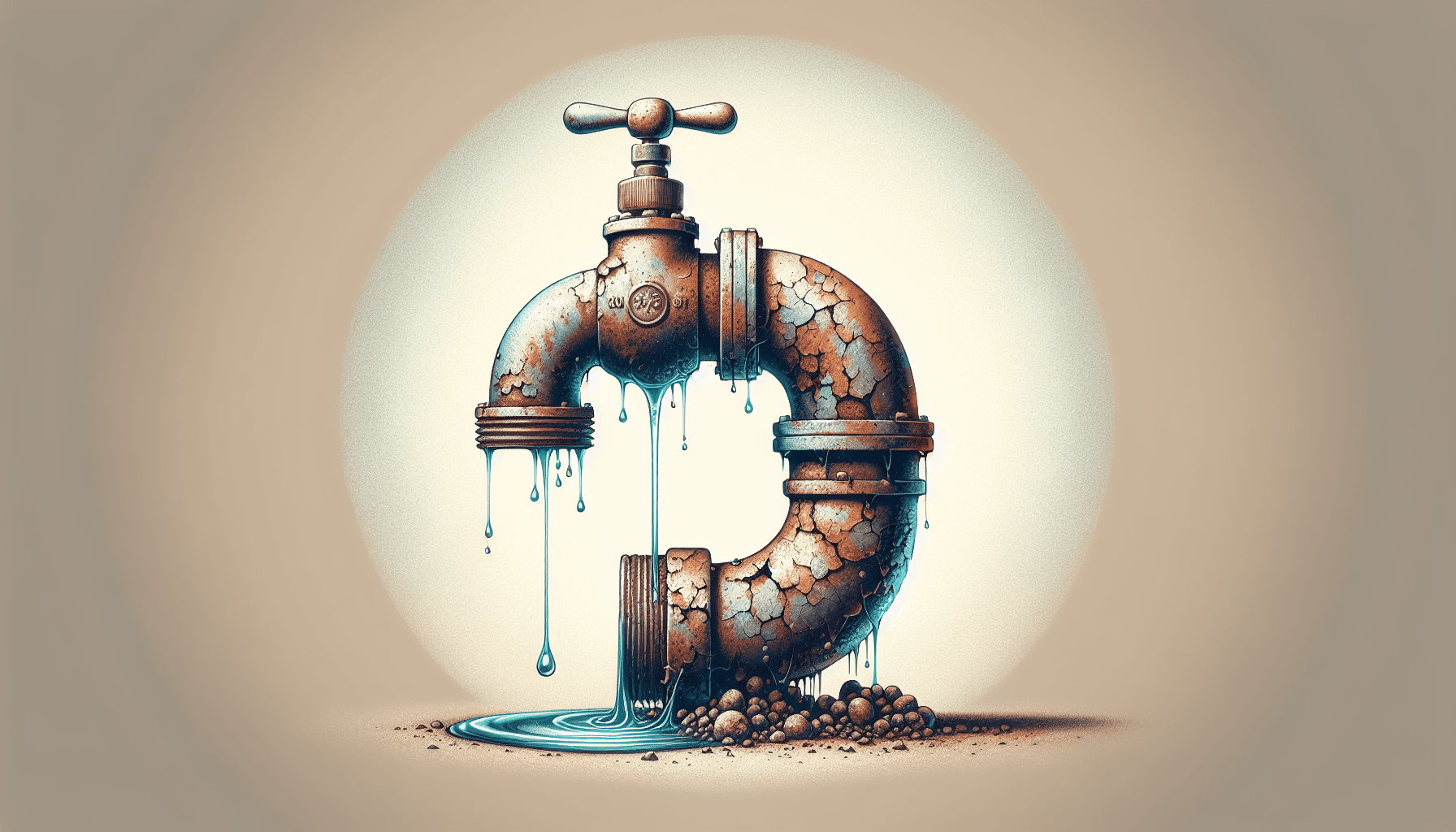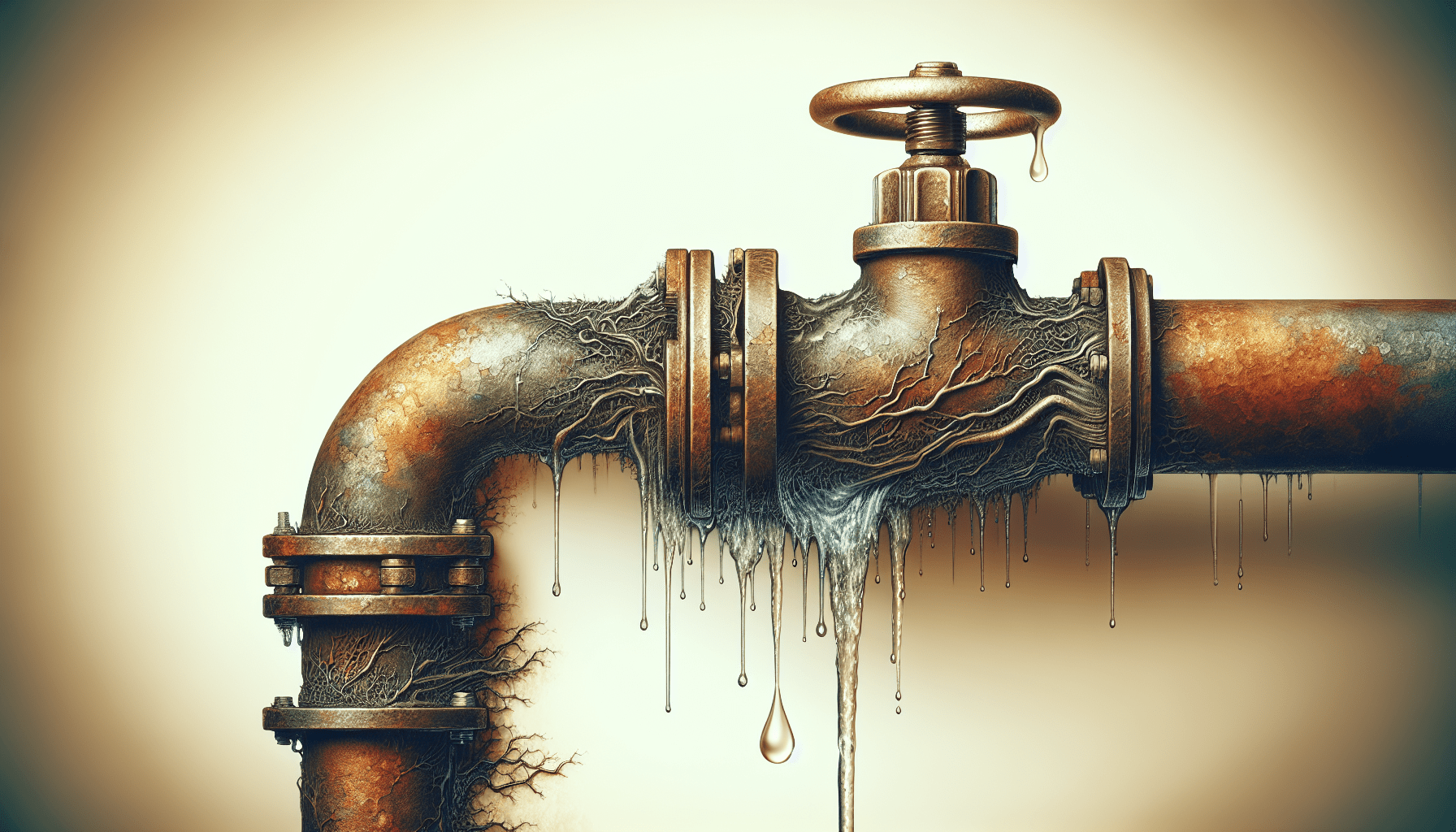Are you frustrated with low water pressure in your home? If so, you’re not alone. Low water pressure can be a common issue that homeowners face, and it can make everyday tasks such as showering or doing dishes a hassle. In this article, we will explore the causes of water pressure problems and provide some practical solutions to help you fix the issue and restore adequate water pressure in your home. So, sit back and relax as we guide you through the world of water pressure woes!

Common Causes of Water Pressure Problems
Water pressure problems can be a frustrating issue to deal with in your home. Whether you’re experiencing low water pressure throughout the house or localized pressure problems in specific areas, it’s important to understand the causes and find suitable solutions. In this article, we will explore common causes of water pressure problems and provide solutions to help you resolve these issues.
Clogged Pipes
One of the most common causes of water pressure problems is clogged pipes. Over time, mineral deposits, debris, and sediment can accumulate in your pipes, restricting the flow of water and leading to reduced water pressure.
Signs of Clogged Pipes
If you notice a significant decrease in water pressure or experience slow-draining sinks and showers, it may be a sign of clogged pipes. Additionally, if you hear gurgling sounds when using water fixtures, it could indicate a blockage in the pipes.
Causes of Clogged Pipes
Clogged pipes can occur due to various reasons. Mineral deposits like limescale can build up in the pipes over time, especially in areas with hard water. Similarly, debris and sediment from rusting pipes can also contribute to clogs.
Solutions for Clogged Pipes
To address clogged pipes, you can try several solutions. One option is using a plunger to dislodge the blockage. Another method involves using a drain snake or auger to break up and remove the clog. For more severe cases, a professional plumber can use hydro-jetting to clear the pipes and restore water pressure.
Water Leaks
Water leaks can also cause water pressure problems, as they divert water away from the intended fixtures and outlets.
Signs of Water Leaks
Signs of water leaks include the sound of running water when no taps are turned on, water stains or wet spots on ceilings or walls, and unexplained increases in your water bill. Additionally, if you notice reduced water pressure in specific areas of your home, it may be due to a hidden leak.
Causes of Water Leaks
Water leaks can occur due to various reasons, such as damaged pipes, loose connections, or faulty plumbing fixtures. These issues can lead to water escaping from the pipes and causing reduced water pressure.
Solutions for Water Leaks
To address water leaks, it is important to locate the source of the leak first. This may involve inspecting visible pipes, checking for wet spots or stains, or using specialized leak detection equipment. Once the source is identified, repairing or replacing the affected pipes or fixtures can help restore water pressure.
Faulty Pressure Regulator
A faulty pressure regulator can also contribute to water pressure problems. The pressure regulator is responsible for maintaining a consistent and safe water pressure throughout the plumbing system.
Signs of a Faulty Pressure Regulator
If you notice inconsistent water pressure, with water sometimes flowing too forcefully and other times barely trickling out, it may be a sign of a faulty pressure regulator. Additionally, if you see leaks around the pressure regulator or experience water hammer (sudden bursts of high pressure followed by a decrease), it could indicate a problem with the regulator.
Causes of a Faulty Pressure Regulator
A faulty pressure regulator can occur due to wear and tear over time or improper installation. Additionally, issues like debris or mineral buildup can affect the functionality of the regulator and lead to pressure problems.
Solutions for a Faulty Pressure Regulator
To address a faulty pressure regulator, it is best to consult a professional plumber. They can inspect the regulator, determine if it needs repair or replacement, and ensure that the water pressure is adjusted to an optimal level throughout your home.
Old or Inadequate Plumbing System
Old or inadequate plumbing systems can also be a common cause of water pressure problems. Over time, pipes can corrode, deteriorate, or become undersized, resulting in reduced water pressure.
Signs of an Old or Inadequate Plumbing System
Signs of an old or inadequate plumbing system include low water pressure in multiple areas of your home, frequent leaks or bursts, discolored water, or a noticeable decrease in water flow.
Causes of an Old or Inadequate Plumbing System
An old or inadequate plumbing system can be caused by various factors. The quality of the materials used during installation, the age of the plumbing system, and improper maintenance can all contribute to the decline in water pressure.
Solutions for an Old or Inadequate Plumbing System
To address water pressure problems stemming from an old or inadequate plumbing system, it may be necessary to upgrade or replace the pipes and fixtures. A professional plumber can assess the condition of your plumbing system and recommend the most appropriate solutions, such as replacing corroded pipes, installing larger diameter pipes, or upgrading fixtures for improved water flow.
Localized Water Pressure Problems
Localized water pressure problems refer to low water pressure in specific areas or fixtures within your home, while the overall water pressure remains satisfactory.
Signs of Localized Water Pressure Problems
Signs of localized water pressure problems include reduced water flow from a particular faucet, showerhead, or toilet. In some cases, you may notice fluctuations in water pressure when using specific plumbing fixtures.
Causes of Localized Water Pressure Problems
Localized water pressure problems can occur due to clogs, leaks, or issues with the particular fixture or faucet. Clogs in the supply lines to a specific area can restrict water flow, resulting in reduced pressure. Leaks in the pipes leading to the affected fixture can also divert water away, leading to decreased pressure.
Solutions for Localized Water Pressure Problems
To address localized water pressure problems, it is important to identify the source of the issue. This may involve checking for clogs in the supply lines, inspecting the relevant pipes for leaks, or adjusting the fixture’s aerator or flow restrictor. If the problem persists, it is advisable to seek professional assistance to diagnose and resolve the issue effectively.
Low Water Pressure throughout the House
Experiencing consistently low water pressure throughout your home can be frustrating and inconvenient. Understanding the causes of this issue can help you find suitable solutions.
Signs of Low Water Pressure throughout the House
Signs of low water pressure throughout the house include weak water flow from all faucets, low water levels in toilets, and insufficient water pressure for showers or appliances like washing machines and dishwashers.
Causes of Low Water Pressure throughout the House
Low water pressure throughout the house can be caused by several factors. These may include clogged supply pipes, insufficient water supply from the municipal source, or problems with the pressure regulator.
Solutions for Low Water Pressure throughout the House
To address low water pressure throughout the house, it is advisable to start by checking for clogs in the main supply lines. Flushing the lines or removing any accumulated debris can help restore water flow. If the issue persists, it is recommended to contact your water provider to ensure an adequate supply. Additionally, consulting a professional plumber to inspect and adjust the pressure regulator can also help resolve low water pressure issues.
Fluctuating Water Pressure
Fluctuating water pressure can be an annoying and disruptive issue. Understanding the causes and implementing appropriate solutions can help stabilize the water pressure in your home.
Signs of Fluctuating Water Pressure
Signs of fluctuating water pressure include sudden changes in water flow or pressure while using plumbing fixtures. For example, you may experience a burst of high pressure followed by a significant decrease while taking a shower or using a sink.
Causes of Fluctuating Water Pressure
Fluctuating water pressure can be caused by several factors, including an issue with the pressure regulator, a damaged or malfunctioning pressure tank, or fluctuations in the water supply from the municipal source.
Solutions for Fluctuating Water Pressure
To resolve fluctuating water pressure, it is essential to identify the root cause. Consulting a professional plumber to inspect the pressure regulator and pressure tank can help determine if they need repair or replacement. Additionally, installing a water pressure stabilizer or surge tank can help regulate the water flow and minimize pressure fluctuations.

How to Troubleshoot Water Pressure Problems
Troubleshooting water pressure problems can be a step-by-step process that helps you identify the underlying issues and implement suitable solutions.
Performing a Pressure Test
Performing a pressure test involves attaching a pressure gauge to a hose bib or an outdoor faucet and measuring the water pressure. This test can help determine if the water pressure is within the appropriate range or if there are abnormalities that require attention.
Checking for Water Leaks
Inspecting your plumbing system for water leaks is crucial in troubleshooting water pressure problems. Look for signs of leaks, such as wet spots, water stains, or unusual water bills. Using specialized leak detection equipment can help identify hidden leaks that may be affecting the water pressure.
Inspecting the Pressure Regulator
If you suspect a faulty pressure regulator, inspecting it can help determine if it is the cause of the water pressure problems. Look for signs of leaks, damage, or improper adjustments. A professional plumber can provide a more accurate assessment and repair or replace the regulator if necessary.
Checking the Water Meter
Checking the water meter can help determine if there are any hidden leaks or abnormalities in water usage. Compare the meter reading when all water fixtures are turned off to the reading when a specific fixture is in use. If there is a significant increase in usage, it may indicate a leak.
Evaluating the Plumbing System
Evaluating the overall condition of your plumbing system can help identify any underlying issues. Look for signs of corrosion, damage, or age-related deterioration in the pipes, fixtures, and connections. A professional plumber can provide a thorough inspection and recommend appropriate solutions based on their findings.
When to Call a Professional
While some water pressure problems can be resolved through DIY troubleshooting and simple solutions, there are instances where professional assistance is necessary.
Signs that Require Professional Assistance
If you have attempted the troubleshooting steps mentioned above and are still experiencing persistent water pressure problems, it is advisable to call a professional plumber. Additionally, if you encounter complex issues such as faulty pressure regulators, extensive leaks, or the need for major plumbing system upgrades, a licensed plumber’s expertise is vital to ensure the problems are addressed safely and effectively.
The Importance of Hiring a Licensed Plumber
When it comes to resolving water pressure problems, hiring a licensed plumber offers numerous benefits. Licensed plumbers have the knowledge, skills, and experience to accurately diagnose the issue, recommend appropriate solutions, and carry out necessary repairs or replacements. They adhere to local building codes and safety standards, providing you with peace of mind that the job is done correctly and with attention to detail.
In conclusion, water pressure problems can stem from various causes such as clogged pipes, water leaks, faulty pressure regulators, or an old and inadequate plumbing system. By identifying the signs, understanding the causes, and implementing suitable solutions, you can effectively resolve water pressure problems and ensure a steady and consistent water flow throughout your home. Remember, when in doubt, it is always wise to consult a professional plumber for expert guidance and assistance.

